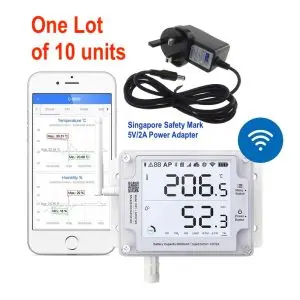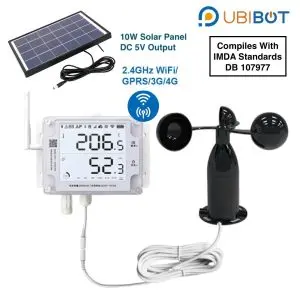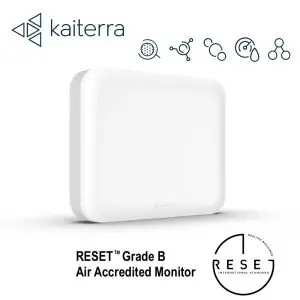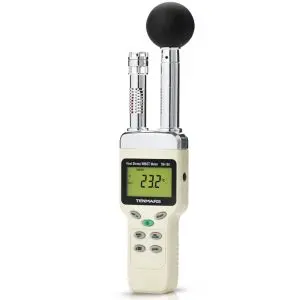Share with others
The air quality measuring instruments consist of indoor air quality (IAQ) monitor and outdoor air quality monitor. The main objective to measure air quality is to understand the main air pollutants in our environment, whether indoor, inside the building, or outdoor, in the open space. There are multiple Singapore Air Quality Guidelines for both indoor and outdoor air quality for different premises. The Singapore Air Quality Guidelines aim to ensure safe air quality levels for all environments.
The common IAQ monitor measure pollutants such as dust (PM2.5), carbon dioxide (CO2), formaldehyde (HCHO), and Chemicals (VOCs). There are more outdoor air pollution to monitor, and the top most common types of gases are Sulfur dioxide (SO2), Carbon monoxide (CO), Carbon dioxide (CO2), Nitrogen oxide (NO), Nitrogen dioxide (NO2), Volatile organic compounds (VOCs), Particulate Matter (PM), and Ozone (O3).
In Singapore, visit https://www.haze.gov.sg/ to view the outdoor air quality information. GMM also provide outdoor real-time dust monitoring system for construction sites, schools, and national parks projects. Rika K300 02 Outdoor Wireless Real-time Dust Monitoring System
The Singapore BCA, NEA & MOH have the Guidance on improving ventilation and indoor air quality in buildings amid the COVID-19 situation. The advisories link as follow: NEA Guidance on Improving Ventilation and Indoor Air Quality in Buildings amid the covid-19 Situation
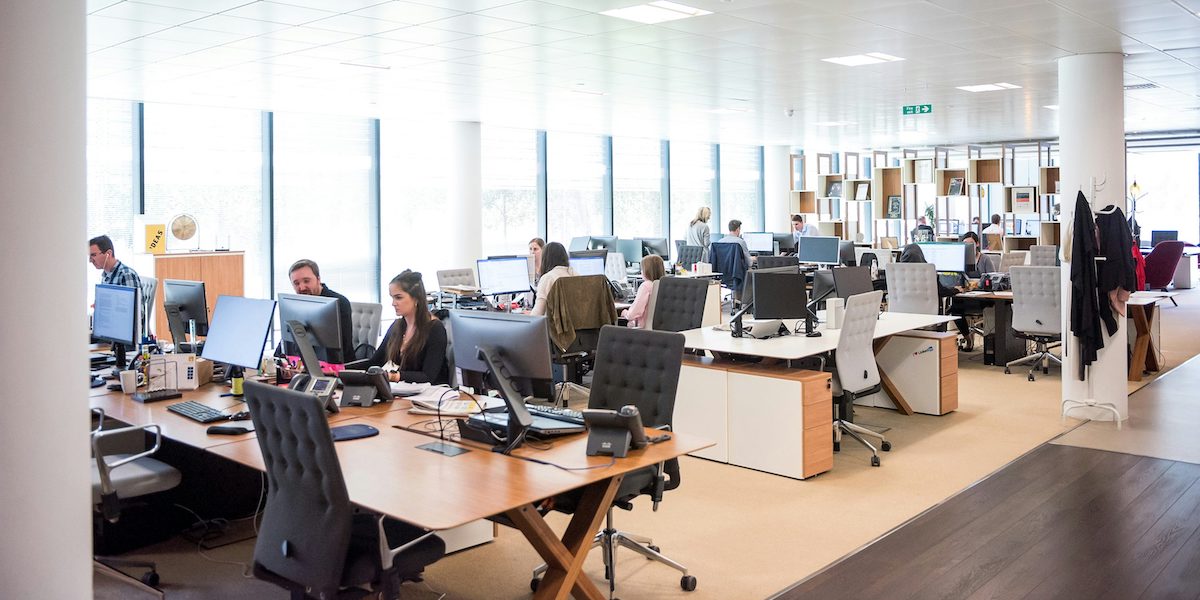
In this article, we will explore Singapore’s air quality guidelines in greater detail, examining the importance of air quality monitoring, the various pollutants of concern, and the measures recommended for maintaining healthy indoor and outdoor environments. Understanding air quality is crucial for public health, particularly in urban areas where pollution levels can rise due to traffic, industrial activity, and other factors.
Adhering to the Singapore Air Quality Guidelines is essential for maintaining health and well-being in both residential and commercial spaces.
These Singapore Air Quality Guidelines provide a framework for assessing and ensuring that air quality remains within safe limits.
The significance of monitoring indoor air quality (IAQ) cannot be overstated. For example, high levels of PM2.5 can lead to respiratory issues, while excessive CO2 can cause drowsiness and decreased cognitive function. By understanding the sources and effects of these pollutants, individuals and organisations can take proactive steps to mitigate their impacts.
Moreover, Singapore has implemented various initiatives to improve outdoor air quality, especially during periods of haze. One such initiative includes the enforcement of stricter regulations on emissions from vehicles and industrial sources. Public campaigns also aim to educate citizens about reducing their carbon footprint and the impact of their choices on air quality.
Understanding and following the Singapore Air Quality Guidelines helps mitigate health risks associated with poor air quality.
The Singapore Air Quality Guidelines recommend regular monitoring to identify and address air quality issues promptly.
By enforcing the Singapore Air Quality Guidelines, the government aims to reduce pollution and protect public health.
The Singapore Air Quality Guidelines also emphasise the importance of green spaces in urban planning to improve air quality.
Many businesses are now aligning their policies with the Singapore Air Quality Guidelines to enhance employee health and safety.
These policies are part of a broader commitment to the Singapore Air Quality Guidelines, ensuring a healthier work environment.
The Industry Guidelines for Indoor Air Quality are closely aligned with the Singapore Air Quality Guidelines, promoting better health standards.
Monitoring data is vital for compliance with the Singapore Air Quality Guidelines, enabling targeted interventions when necessary.
Furthermore, the role of vegetation in air quality improvement cannot be ignored. Urban planning in Singapore incorporates green spaces and vertical gardens, which help filter pollutants and improve overall air quality. Studies have shown that increasing greenery in urban areas can significantly reduce particulate matter and enhance the well-being of residents.
In 2021, the BCA-HPB Green Mark Healthier Workplaces:2018 and Green Mark:2021 Certification Requirements with 18 points on Indoor Air Quality and 12 points on Spatial Quality. GMM have IAQ monitoring system to meet the criteria.
In 2022, the government introduced new policies aimed at promoting healthier indoor environments in workplaces. These policies include guidelines for proper ventilation, the use of air purifiers, and the importance of regular maintenance of HVAC systems. The goal is to create spaces where employees can thrive, thus improving productivity and overall job satisfaction.
Wednesday, 4 January 2023 [Singapore] – Minister for Sustainability and the Environment Ms Grace Fu officially launched the “Industry Guidelines for Indoor Air Quality”. The industry guidelines are part of efforts by the Alliance for Action (AfA) on Sustainable Spaces to raise public awareness on the importance of good indoor air quality.
Following the Singapore Air Quality Guidelines will set a benchmark for other countries looking to improve their air quality standards.
Data from air quality monitors can provide valuable insights into the effectiveness of these measures. For instance, real-time data on PM2.5 levels can help organisations assess their air quality and make informed decisions regarding necessary interventions. Continuous monitoring allows for prompt responses to any potential air quality issues.
In addition to the RESET Air standards, other certification systems, such as WELL Building Standard, encourage organisations to prioritise air quality. These systems provide a framework for evaluating and improving indoor environments, ultimately fostering healthier living and working conditions.
The RESET and WELL Air Standard is a data standard for air quality monitoring used worldwide. REST Air for indoor are quality data is required to be continuously gathered through air quality monitors that measure the five parameters, there are PM2.5, TVOC, CO2, Temperature and Relative Humidity.
Finally, it is essential to engage with community stakeholders in air quality initiatives. This can include collaborations with schools, businesses, and non-profit organisations to raise awareness and create actionable plans for improving local air quality. Community involvement plays a significant role in the success of any air quality programme.
GMM Technoworld do sell RESET Air Accredited Monitors for RESET Air projects pursuing Commercial Interior Certification. The list of IAQ monitors: RESET IAQ Monitors Directory and we have Tonngdy MSD-18, Kaiterra Sensedge and Kaiterra Sensedge Mini.
As we continue to navigate the challenges posed by air pollution and climate change, it is imperative that we remain vigilant and proactive in our efforts to monitor and improve air quality. The guidelines set forth by Singapore serve as a model for other nations striving for cleaner air and healthier environments.

Recommended

EDSS™ Warehouse 10 units UbiBot GS1-A Industrial-Grade WIFI Wireless Data Logger IoT System
SGD4,142.00 inc. TAX
SGD3,800.00 exc. TAX
UbiBot GS1-AL4G1RS Industrial-Grade WIFI 4G SIM Temperature Humidity Light Data Logger w/ Wind Speed + Solar Power
SGD728.00 inc. TAX
SGD667.89 exc. TAX
Kaiterra Sensedge Mini 7-in-1 PM2.5 PM10 TVOC CO2 O3 Temperature Humidity Monitoring Solutions
- -9% HOT

Tenmars TM-188 Heat Stress WBGT Meter with Dew-Point (DEW) and Wet bulb (WET)
Original price was: SGD328.00.SGD300.00Current price is: SGD300.00. inc. TAX
SGD275.23 exc. TAX
Project Articles
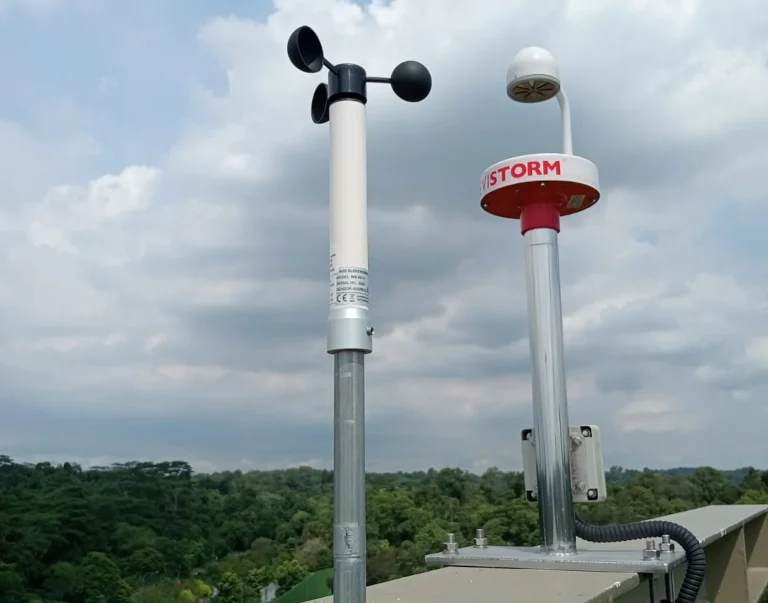
GMM Technoworld Ensures Safety at Rainforest Wild Asia’s Free Fall Tower with Cutting-Edge Wireless Anemometer
Thrilling adventures await at the soon-to-open Rainforest Wild Asia, and GMM Technoworld is proud to play a crucial role in ensuring the safety of all thrill-seekers. We’ve just completed the successful testing and commissioning of our state-of-the-art Navis wireless anemometer…
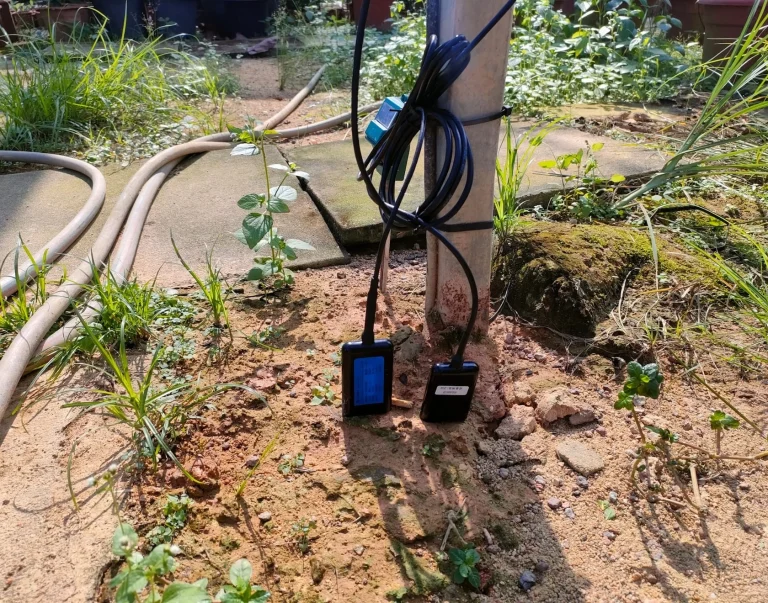
GMM Technoworld Revolutionizing Agriculture
UbiBot GS1 and the Future of Farming Soil Monitoring Precision agriculture is no longer a futuristic concept; it’s a necessity for modern farmers seeking to maximize yields and optimize resource utilization. At the heart of this agricultural revolution lies the…

